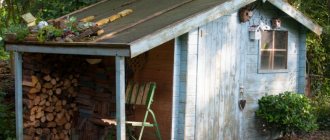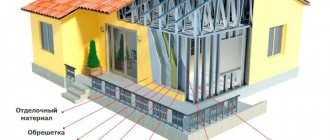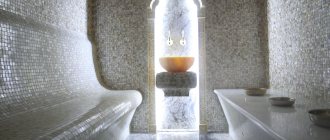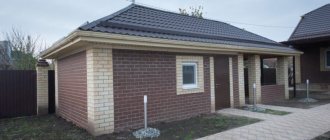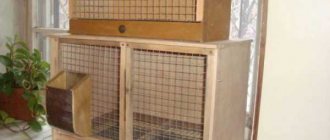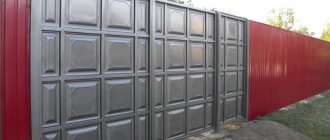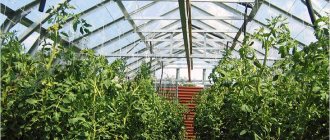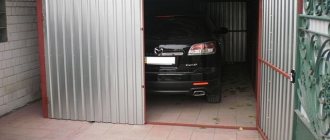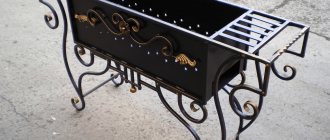The optimal location of the building relative to the cardinal directions makes it much easier to control the temperature in the rooms throughout the year. In addition, proper building orientation helps reduce energy costs.
The house should be planned so that the sun and shadow are allies all year round and at any time of the day. How can this be achieved? Not everyone comes across the perfect plot of land, but on every plot of land you can build the perfect house.
The location of the house on the cardinal points on the site needs to be considered at the site selection stage. The ideal site is on the southern slope of a small hill. The correct location of the premises in the building will help to implement an entrance from the north side. The size of the land plot is of considerable importance. The larger it is, the easier it is to position buildings correctly. An energy-efficient house can be built on a small plot of land, but it is more difficult to plan the optimal location.
The rhythm of the day, the daily habits of the family are very individual characteristics. It is difficult to find uniform rules to which they can be subjected. A universal scheme - a house with a street to the north and a garden to the south - will not suit everyone. In the article, we will refrain from simple formulations and rules, but will describe different options that help facilitate the selection of a plot of land, a finished project, and the choice of the location of rooms.
How to arrange beds in the garden
Any area loves order. If there is chaos in the garden, if there are adjacent crops that cannot tolerate each other, if the owners do not know what width and height the garden bed should be, then it is unlikely that good fruiting will occur.
It is impossible to simply trust nature and spontaneously arrange ridges, or plant crops at random. Each plant has its own character, it needs its own conditions for growth and development. Therefore, an experienced homestead owner, before planting a particular crop, will find out in what soil the plant will do well and what kind of lighting it needs.
Basic rules for planning beds on the site
Every gardener who has spent decades in his favorite garden knows the requirements:
- it is necessary to plan the site;
- decide where and what cultures will grow, so as not to compete, but to help each other;
- determine the optimal size of beds;
- outline their correct location;
- work out a scheme according to which the plants will be grown.
Layout according to cardinal directions
The most successful layout option is that the beds should go from the north to the south. A location from the southwest to the northeast is also considered a less successful, but quite common option. In the first and second cases, the plants do not lack light; they all have enough warmth and sun, which are so necessary for proper growth.
If the garden is modest in size, then you can deviate from these rules, but you still must not forget that crops still require special attention. So, legumes, cucumbers, and tomatoes prefer the southern side. On the north side you can plant those plants that tolerate cold well. It could be carrots, radishes. However, in any case, the owners of the site need to take care that the north wind does not cause disease and death of plants - they need a good barrier from drafts.
Gardeners often use a green “fence” made of bushes for this purpose. Currants, gooseberries, and raspberry bushes do an excellent job with this task. They protect crops that are afraid of the wind. But it makes no sense to use trees as a barrier from the wind. Not only do they not provide protection, but they also form a shadow curtain, and on the north side there is already little sun.
Taking into account the relief on the site
There is no ideal vegetable garden located on very flat terrain. In any case, gardeners have to take into account the features of the terrain. If you plant seedlings without paying attention to unevenness, you can put an end to a good harvest. What dangers await the garden?
In the lowlands, the snow slowly melts in the spring, the water stagnates, and after the rains, swamp puddles form. Sloping hills are again not suitable, because the plants will experience inconvenience and a lack of light and nutrition.
Therefore, gardeners must level the ground, fill holes and ditches with soil. Areas with a slope are marked so that plants that love moisture can be planted in the lowlands, but drainage still needs to be taken care of. If the garden is located where there is a lot of groundwater, it is better to arrange special mounds for fruit trees using peat, manure, and humus.
Tomatoes, cucumbers, and peppers are usually planted in lowlands, especially in areas where summers are hot. In areas with a cool climate in the lowlands, beds are set aside for zucchini and cabbage.
Sloping terrain is marked, focusing on the cardinal directions. Moreover, it is preferable to plant across rather than lengthwise. This is done so that the plants do not feel thirsty or, on the contrary, do not drown in water.
How to take light into account when creating beds
Another important factor influencing the future harvest is illumination. Plants love light, and if there are trees near the garden bed that cover the area with thick crowns, then the crops will wither. Therefore, you need to try to plan your garden so that all vegetables have enough light.
In addition, you should know which crops love the sun and which prefer partial light. For example, potatoes and peppers need a lot of sun; they are not too afraid of heat. And tomatoes, although they are heat-loving, heat is harmful to them. Zucchini needs long sunny days. Pumpkins, eggplants, melons, and squash enjoy the sun.
But beets need partial shade; this is the most comfortable environment for this crop. Cucumbers also seem to love the sun, but partial shade is also suitable for them. But you should be careful when planting lettuce, cabbage, parsley, and arugula. These crops wither in the sun, they need shade for most of the daylight hours, and only three hours of bright sunlight a day is enough.
Layout features for different regions
Recommendations on how to properly place beds: from north to south or from west to east, differ for different climatic conditions.
Thus, residents of the northern and central regions, where there is less sunlight and more cloudy days, as well as insufficient heat and excess moisture, are advised to orient their plantings from north to south. Plants planted in this way will not shade each other.
Vegetable gardens in the southern hot and dry regions need beds oriented from west to east. With this planting, crops shade the soil between the rows, which means it dries out less, and the negative impact of overheated soil is reduced. Farmers' experiences show that in conditions of insufficient rainfall, the yield of corn sown in this way was 20-25% higher than that grown in rows from north to south.
The location of the beds on the cardinal points is not always justified. The presence of strong constant winds in the region or the location of the site at an angle significantly corrects this scheme. Thus, the negative impact of dry winds on plants is compensated by planting across the direction of air flows. In this case, the plantings dry out less and retain more carbon dioxide, which promotes photosynthesis. Ridges on an uneven area are made only across the slope.
Mitlider layout diagram
What size should the beds be?
Each owner has his own garden size, with its own relief structure, so there are no standard rules for marking out beds and there cannot be. However, everyone comes with markings, taking into account the ease of use of the site.
Bed width
The average width of the planting strip is recommended to be 50 cm, but only if the gardener plans to approach the garden bed only from a specific side. If it is assumed that the work will be carried out from opposite sides, then the ridge may be a meter wide. The gardener will reach with his hand to the middle of the ridge to remove weeds, introduce fertilizing, and carry out watering work.
Ridge height
In regions with cold climates, gardeners try to raise the beds slightly so that the plants are in a comfortable environment, so that the cold from deep in the ground does not cause discomfort to the roots. The height of the bed in such an area is recommended to be 10 cm. It can be made higher. Raised beds are paved on a deck made of boards, you can use plastic or slate.
Track width
Paths that are too narrow are inconvenient to use. A gardener should feel comfortable, and not like a heron on one leg. Therefore, the optimal path width is 40 cm.
Summarizing
Narrow ridges will help to obtain high yields even in areas with the most infertile soil. Single- or double-row crops are planted on the ridges, annual crop rotation is strictly observed, and the plantings are mulched with a thick layer of organic material. The earth is not dug up, but instead the surface layer is loosened to a depth of 5 cm. The box for the beds can be made from anything; the service life of the wooden box will increase if the inside is upholstered with synthetic material.
sapin FORUMHOUSE Member
I succeeded, but I did it differently everywhere: in some places I laid sticks and grass on the bottom layer, in some places I just put cardboard and covered it with humus. Next year I’ll plant potatoes shallowly without digging!
On FORUMHOUSE you can read about permaculture, the technology of a “lazy garden” that takes care of itself, and understand what to plant with what. Learn how to make smart tools with your own hands, watch a video with an overview of new products for working in the garden.
Subscribe to our Telegram channel Exclusive posts every week
What shape can the beds take?
There is no friend for the taste and color, or rather, the shape of the garden bed. Because every owner can come up with his own, more convenient for him.
Gardeners usually mark rectangular beds; this is the traditional shape that is used everywhere. However, if the plot does not have the correct shape, but you need to find a place on it for various crops, then you can make a “triangle”, “oval”, or “square” bed. Some gardeners even install multi-level structures, which not only help save space, but also become an original landscape design solution. However, in this case, the owners of the site must choose such a space so that the crops do not lack light.
Location of the house taking into account the terrain of the site
First you need to understand where the slope of the site goes (this requires topographic survey).
To avoid flooding and erosion of the foundation, it is better to locate the house on the highest part of the site. However, the site is not always successful. If you still have to locate the house in a lowland, it’s okay: you need to ensure maximum drainage.
Positioning the house too high relative to the rest of the site is also undesirable: you may have to add soil over time.
What kind of sides can be made for the beds?
Some gardeners believe that fencing of this kind is unnecessary trouble. But others argue that this is one of the good ways not only to keep the ridges from crumbling, but also the opportunity to somehow limit the access of weeds.
Experienced gardeners agree with the second statement, and install fences for beds from slate, boards, make a special box, prepare metal, stone or plastic sides.
Each of the materials chosen for the sides has advantages and disadvantages:
- Slate. Since you can use an old one that has already been used for fencing, the benefit is obvious. However, it is believed that this material is inferior in environmental friendliness, for example, to wood, and is fragile and breaks quickly.
- Wooden sides. Making a fence is easy, and the material is inexpensive. However, such sides do not “live” for long; from time to time the beds will have to be made new.
- Metal. The material is quite durable, but it heats up in the sun, which is not very good for the soil, especially in hot weather. For fencing, you should choose metal structures that have been treated against moisture.
- Stone sides. Durable, aesthetic, which decorate the site. However, decorating a garden bed with such material is difficult, and garden beauty will require costs.
- Border tape. The easiest option is to buy the tape in a specialized store. It will last a long time, but a high-quality product is expensive, and getting involved with a cheap one means adding hassle to yourself, including financial ones.
- Plastic. Even simple mineral water or soda bottles, if filled with sand and painted, will become good borders for garden beds. And the design of the site will be original. However, again, according to environmentalists, plastic is not environmentally friendly, like car tires.
How to arrange greenhouses and greenhouses
Greenhouses are temporary shelters for plants, so they do not require a special place. And it is not necessary to place them next to the house, because this design does not need, for example, a heating system, which is often supplied by greenhouses, especially in areas with an unstable climate. It is only important to take into account that it is better to install a greenhouse where it is subsequently planned to grow other crops that require nutritious soil. For example, tomato seedlings.
The greenhouse should be placed where there is sun. It is the sun that will help create the desired atmosphere in this “warm house” for seedlings, so installing such a structure in the shade is pointless and even dangerous. The soil in a greenhouse installed in the shade will warm up very slowly. The location of the greenhouse is preferred from north to south so that the plants inside it receive the right amount of light. Moreover, when planting seedlings, it is important to remember that the northern area should be occupied by tall varieties, and the southern area by low bushes.
How to place tall plants and bushes on the site
Trees do not like cold winds, so on the north side of the site you need to create protection for them so that the plants do not “catch a cold.” By the way, if the trees are located in the north of the site, then they do not provide shade to other plants planted to the south.
Fruit trees are usually planted in two rows. In addition to the north side, the west side is also preferable. Between the rows you need to make gaps of 8 meters, and between the plants themselves, 6 meters is enough.
It is also important to consider that trees should be planted so that neighboring gardens are not affected by their shade, otherwise there will be plenty of problems with other gardeners. Therefore, there should be about four meters between the border of the site and the place where the tree is planted.
The bushes also need to find the right place. Since they do not need bright lighting and can be in the shade, raspberries can be planted near apple trees. Sea buckthorn and chokeberry are not afraid of the wind, so they are often planted instead of a “green fence”. But grapes love the sun and love warmth, so they need to find a place where there is a lot of light.
Plant the bushes so that there is a gap of a meter and a half between them. However, if we are talking about gooseberry bushes, then a distance of 2.5-3 meters should be taken into account, since they are prone to growing. But for honeysuckle and raspberries, as well as currants, a gap of one meter is enough.
The best plots in the Tyumen region
You can easily comply with building codes by initially choosing a well-located area of the correct shape. Development sells a large selection of plots with land designated for individual housing construction in the settlements of Leto-Park and Lugovoe.
Cottage villages are located in picturesque places of the Tyumen region near the capital of the region. There is everything for a comfortable country life: roads and passages, utilities, landscaped areas for walking and leisure, social and infrastructure facilities.
Recommendations from experienced gardeners and gardeners
Experienced plant growers know all the nuances of working in home gardens. To get a good harvest, you need to adhere to many rules, know the features of crop rotation, and the nature of the crops grown.
Here are some tips from experienced gardeners about plot arrangement:
- It is preferable to use small greenhouses no more than 6 meters long on the site. The fact is that long greenhouses have a “dead” zone in the middle, in which such a steam room is formed that it is difficult for the plants. Therefore, shorter “houses” are much more convenient.
- A greenhouse installed in the north-south direction warms up well in the eastern sun.
- If you install a couple of rows of greenhouses side by side, you can provide a good fence for the area from prying eyes.
- It is best to arrange the trees like chess pieces. The triangular design allows for better care of fruit trees. At the same time, if a gap of 6 meters is needed between tall trees, then three or four are enough between plants of medium height.
- It is advisable to plant cherries on the south side of the site. The same rule applies to plums.
- If they want to grow walnuts on the plot, then they choose a place for it near the house, away from other fruit crops.
- For plums, you need to find a place where there is not a lot of snow. If the tree trunk is covered in snow, this will have a detrimental effect on the plant.
- Currants - white and red - need light, so these bushes cannot be planted where black currants are blissful - in partial shade.
- Strawberries will produce a good harvest only in a well-lit place, closed from drafts.
- Trees that have different periods of ripening and fruiting, but are planted close to each other, feel bad. Winter and summer fruit varieties are not in good harmony, so productivity suffers.
Natalia
Author
Ask a Question
If you approach the planning and arrangement of your garden plot wisely, you can create a favorable environment for crops that will thank the gardener for his care with a good harvest.
What does an accurate calculation provide?
Correct orientation of plantings contributes to:
- reducing the number of sick and underdeveloped plants;
- uniform lighting of crops;
- reducing the frequency of watering;
- increase in yield by 10-15%;
- reducing the ripening time of some crops by 3-5 days.
Orientation from north to south with predominantly cloudy days
In addition, some gardeners claim that vegetables grown in the correct planting direction store better.


